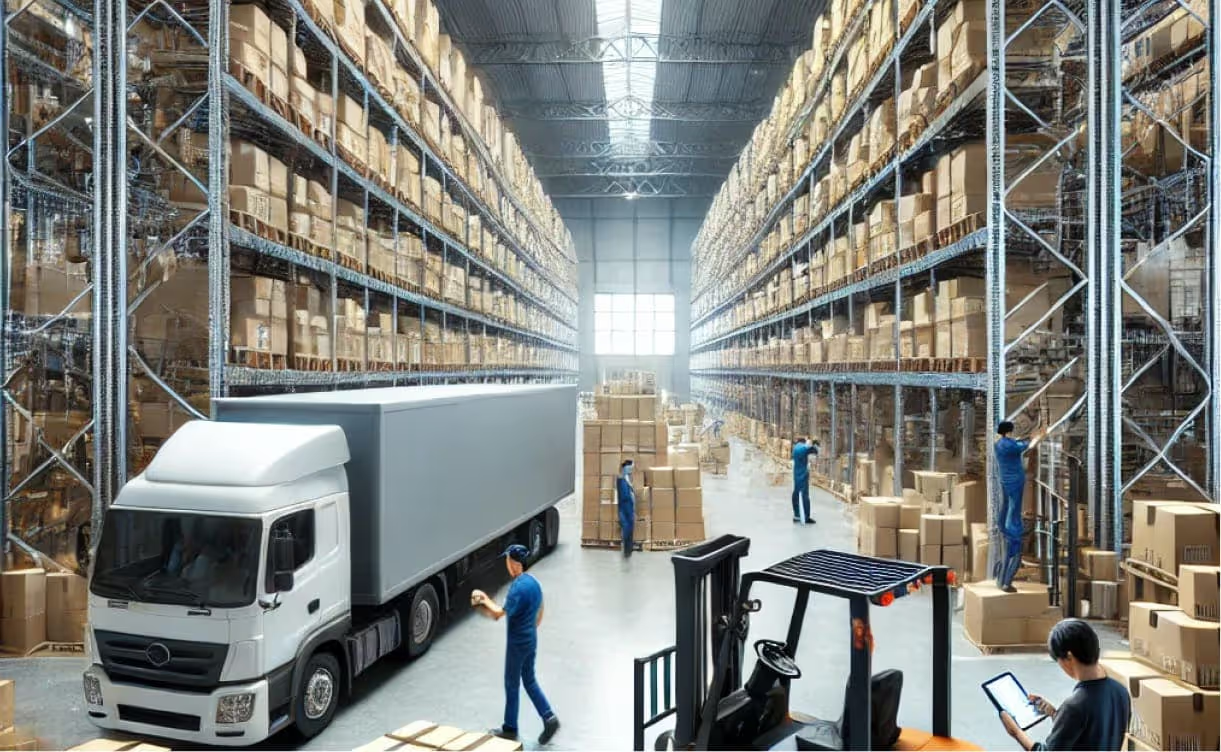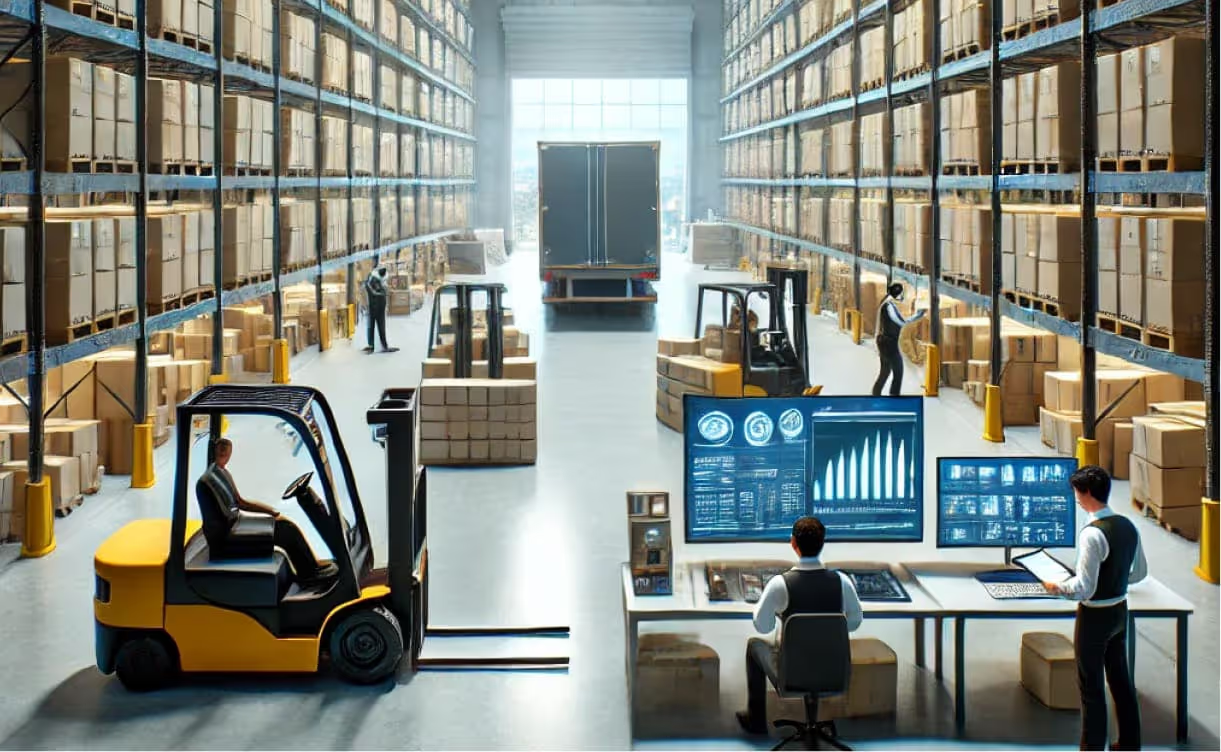Understanding Tracking Codes: Decoding Your Shipment's Journey
JANUARY 13, 2025

In the fast-evolving world of logistics and supply chain management, delivery issues are inevitable. Packages may be delayed, rerouted, or lost due to unforeseen circumstances such as weather disruptions, infrastructure challenges, or human error. However, advanced parcel tracking features have revolutionized the way businesses handle these issues, enabling them to proactively identify and resolve problems before they escalate.
Leveraging tracking data effectively not only minimizes the impact of delivery disruptions but also enhances customer satisfaction and operational efficiency. This comprehensive guide explores how advanced tracking features empower businesses to address challenges preemptively, the key technologies that make this possible, and best practices for utilizing these tools in your logistics strategy.

Delivery problems can arise at any stage of the logistics process, whether during the first-mile pickup, transit, or last-mile delivery. Proactive problem solving focuses on identifying potential issues early and taking corrective actions before they affect the customer experience. This approach is essential for mitigating the financial and reputational risks associated with delayed or failed deliveries.
Modern consumers demand transparency and reliability in their deliveries. Real-time tracking and proactive communication are now baseline expectations. Businesses that leverage advanced tracking features to anticipate and resolve issues can exceed these expectations, fostering trust and loyalty among their customers.
Addressing problems proactively reduces the time and resources spent on handling escalations, processing refunds, or replacing lost items. Advanced tracking features streamline operations by providing actionable insights that improve route planning, resource allocation, and overall efficiency.
Real-time GPS tracking is at the heart of advanced parcel tracking systems. It allows businesses to monitor the exact location of packages at every stage of transit. This feature provides:
Immediate Visibility: Businesses can identify delays or detours as they occur.
Accurate ETAs: Customers receive precise delivery estimates, reducing uncertainty.
Enhanced Security: High-value shipments can be closely monitored to prevent theft or misplacement.
Predictive analytics uses historical and real-time data to forecast potential issues. For instance, it can identify patterns that lead to delays, such as peak traffic hours or weather disruptions. This enables:
Proactive Rerouting: Dispatchers can adjust delivery routes to avoid known obstacles.
Capacity Planning: Businesses can allocate resources more effectively during peak seasons.
Issue Anticipation: Problems such as late pickups or missed deadlines can be mitigated before they occur.
Geofencing creates virtual boundaries around specific areas, such as distribution centers or delivery zones. When a package enters or leaves these boundaries, automated alerts are triggered. This feature is particularly useful for:
Ensuring Timely Deliveries: Notifications when parcels approach their destination.
Preventing Delays: Alerts if packages deviate from planned routes.
Tracking Milestones: Real-time updates on critical delivery stages.
Internet of Things (IoT) devices integrated into parcels or vehicles provide real-time data on environmental conditions such as temperature, humidity, and vibrations. This is crucial for sensitive shipments like pharmaceuticals, perishables, or electronics. Key benefits include:
Quality Assurance: Ensuring that products are maintained in optimal conditions.
Early Problem Detection: Alerts for anomalies such as temperature fluctuations.
Enhanced Accountability: Detailed records of shipment conditions during transit.
Advanced tracking systems can automatically identify and address exceptions, such as delivery failures or package delays. This automation simplifies resolution processes by:
Notifying Stakeholders: Real-time alerts for affected parties.
Initiating Solutions: Automatically rescheduling deliveries or rerouting packages.
Reducing Manual Effort: Streamlining issue resolution without human intervention.
Advanced tracking systems collect and analyze vast amounts of data in real-time. By identifying trends and anomalies, these systems can detect potential issues before they impact deliveries. For example, a significant traffic jam along a delivery route might trigger an alert to reroute vehicles, preventing delays.
Transparency is vital during delivery disruptions. Advanced tracking tools enable seamless communication between carriers, shippers, and customers. Automated notifications inform stakeholders about delays, new ETAs, or alternative delivery options, reducing confusion and enhancing trust.
Dynamic route optimization powered by GPS and predictive analytics ensures that deliveries remain efficient even in the face of challenges. Real-time traffic updates and geofencing alerts enable dispatchers to adjust routes on the fly, avoiding bottlenecks and ensuring timely deliveries.
With features like geofencing and IoT-enabled monitoring, businesses can track the exact location and condition of parcels at all times. This not only prevents theft and loss but also provides a clear chain of custody, making it easier to identify and address discrepancies.
By addressing issues proactively, businesses can minimize delivery delays and ensure that customers receive their parcels on time. Real-time tracking and automated updates keep customers informed, reducing the need for inquiries or complaints.
Choose tracking systems that offer robust features such as real-time GPS, predictive analytics, and IoT integration. Ensure that the platform is scalable, user-friendly, and compatible with your existing logistics infrastructure.
Equip your logistics team with the knowledge and skills needed to effectively use tracking systems. Provide training on interpreting tracking data, addressing exceptions, and communicating with customers.
Integrate your tracking platform with other logistics tools, such as transportation management systems (TMS) or warehouse management systems (WMS) . This ensures seamless data sharing and improves overall operational efficiency.
Use tracking data to identify patterns and trends in your delivery operations. Analyze performance metrics such as on-time delivery rates, customer satisfaction scores, and exception resolution times to identify areas for improvement.
Keep customers informed throughout the delivery process by sending automated updates and notifications. Transparency builds trust and reduces the impact of potential disruptions.
An e-commerce company implemented advanced tracking features to address last-mile delivery challenges. Using real-time GPS and predictive analytics, the company reduced delivery delays by 25%. Automated notifications kept customers informed, resulting in a 30% decrease in complaints.
A pharmaceutical company used IoT-enabled condition monitoring to transport temperature-sensitive vaccines. Real-time alerts for temperature fluctuations allowed the company to take immediate action, ensuring product integrity and avoiding costly losses.
A logistics provider leveraged geofencing and GPS tracking to monitor high-value shipments. Alerts for unauthorized route deviations enabled quick interventions, reducing theft incidents by 40%.

AI and machine learning will further enhance tracking systems by:
Predicting delivery delays with greater accuracy.
Automating exception handling processes.
Offering personalized delivery solutions.
Blockchain can improve transparency and security by creating immutable records of parcel movements and conditions. This technology will enhance accountability and reduce fraud in the supply chain.
The integration of autonomous delivery vehicles and drones with advanced tracking systems will revolutionize last-mile logistics. Real-time monitoring will ensure efficient and secure operations.
Future tracking systems will focus on reducing environmental impact by:
Optimizing routes for fuel efficiency.
Promoting eco-friendly delivery options.
Using energy-efficient IoT devices.
Advanced parcel tracking features are transforming the logistics landscape, enabling businesses to proactively address delivery issues and enhance customer satisfaction. By leveraging real-time data, predictive analytics, and IoT-enabled monitoring, companies can streamline operations, reduce costs, and build trust with their customers.
As technology continues to evolve, the potential for proactive problem solving in logistics will only grow. Businesses that embrace these innovations will not only gain a competitive edge but also contribute to a more efficient, secure, and customer-centric supply chain.
By adopting the best practices outlined in this guide, you can harness the full potential of advanced tracking systems and ensure that your delivery operations remain reliable, transparent, and adaptable in the face of future challenges.